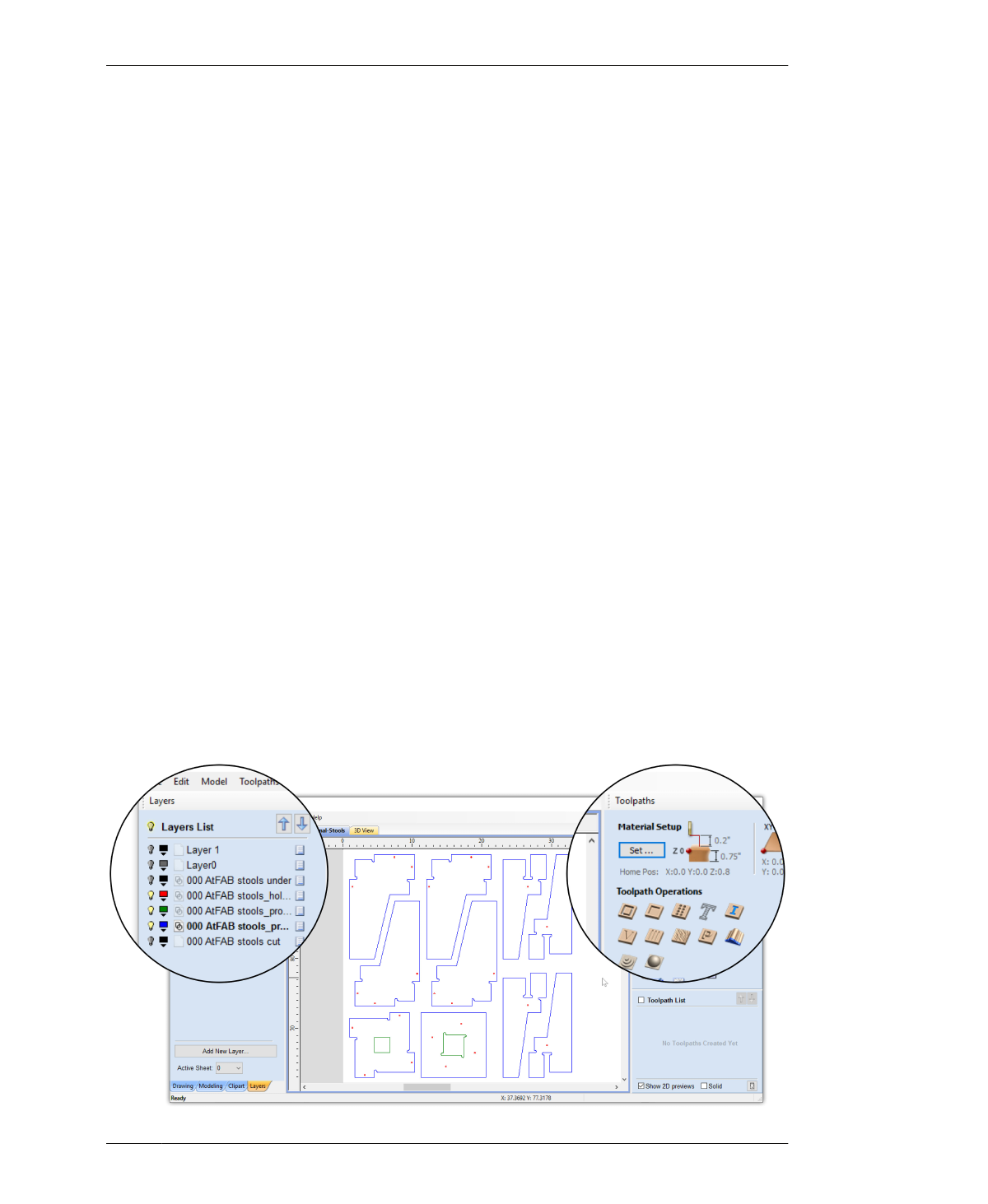
CREATING PROFILE TOOLPATHS FROM VECTORS
The outside toolpath creates a dimensionally
accurate part, while the inside toolpath cuts a
correctly sized slot. The on vector cutting
option is not dimensionally accurate as a slot or
a part. Avoid cutting on the vectors, unless you
are etching or cutting decorative embellish-
ments.
ROTATIONAL STOOLS TOOLPATHS
ATFAB_STL_D4CNC.skp has three toolpathing
layers. The vectors that outline each part are
assigned to the Profile Outside layer, the square
shapes centered in each of the seats are
assigned to the Profile Inside layer, and the vec-
tors that form the fastener holes are assigned
to the Profile Hole layer.
Up to this point, you have been working with
virtual vectors organized onto layers—let’s turn
them into actual, physical toolpaths!
To cut out the Rotational Stool’s outer profiles,
you need to assign the tool to cut on the out-
side of the vector, creating dimensionally accu-
rate parts that will fit together well. Conversely,
to machine the Stool’s inside profiles and fas-
tener holes, the inner dimension is important,
so you’ll assign an inside toolpath that will cut
on the inside of the vector.
In addition to defining the relationship between
the cut path and 2D vector, toolpaths also
require four other inputs: tool diameter, cut
depth, pass depth, and toolpath type.
In the following steps, you’ll be using the Tool-
paths menu, shown in Figure 7-24 to create
three different toolpaths to handle these differ-
ent cutting requirements. As you define each
toolpath, it’s helpful to take advantage of your
layer organization. Use the Layers List palette
to isolate and assign definitions to each
toolpathing layer.
The Toolpaths menu is on the right; the Layers
menu is on the left.
VCARVE’S MULTI-MENU INTERFACE
VCarve Pro has top-level drop-down menus,
but it also has two main blue “side menus” that
both govern and demarcate CAD and CAM
functionality. The left toolbar area shown in
Figure 7-24 is for job setup and CAD opera-
tions. In later steps, we’ll use the right toolbar,
which is exclusively for creating toolpaths.
FIGURE 7-24
Layers List palette on
the left side, and Tool-
path Operations on the
right
07/MODELING SOFTWARE TO MACHINE
181
